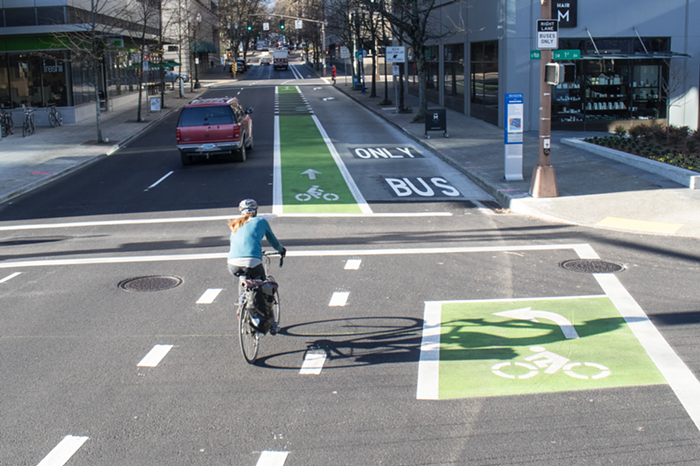For the Jubitz Center's third exhibition since opening last fall, the Portland Art Museum presents a survey of Richard Rezac's minimalist sculptures from the last decade. In one sense, it's an anti-climactic follow-up to its predecessors (Sophie Calle's Exquisite Pain and Roxy Paine's PMU), but Rezac's understated forms mark a welcome departure from Calle and Paine's concept-driven work. The show also marks something of a return to Portland for the Chicago-based Rezac, who graduated from Pacific Northwest College of Art in 1974. For an artist who began his career with shows at Blackfish, the Portland Center for Visual Arts, and galleries at Willamette University and Linfield College, this is quite a homecoming.
Rezac's sculptures are deceptively simple in their minimalism. They are composed of the most basic geometric forms and rendered in traditional sculptural materials, such as wood, steel, and bronze. As with most minimalist sculpture, they are cold in their denial of the artist's touch. The bolts that fasten steel panels together are conspicuous and, when the materials are painted, there are no brushstrokes to observe. Rezac has a penchant for summery colors and coats metal and wood in soft yellows, light greens, and azure blues. It's jarring to see these materials recast in such unexpected tones; Rezac's cheery palates almost beg the viewer to read them as designer editions of factory-produced commodities. Looking at the angular, salmon-pink forms perched over a reflective aluminum background in "Untitled (05-03)," I began to see them as plastic handles one might find on a kitchen appliance.
The most disorienting aspect of Rezac's art, though, is its interaction with space. The show's most engaging piece, "Untitled (98-06)," offers the best example. A U-shaped steel frame painted pale, lime green hangs from the wall, probably nine feet from the floor. On the underside of the frame, Rezac has attached a series of nickel-plated bronze mounds of varying sizes. Looking up at the sculpture or even standing beneath it, the viewer can't see how these mounds are fixed to the frame; they seem to cling like magnets. And as the viewer peers up, the nickel plating on these forms creates a blurred reflection. Not only does it force one to consider his spatial relation to the sculpture, but, coupled with the apparent weight of the forms and their seemingly precarious attachment to the frame, it creates a very uneasy tension.
To contrast the intimidating experience of "Untitled (98-06)" is a similar piece on an adjacent wall of the gallery, "Cove (01-01)." Like the untitled piece, "Cove" features a steel frame with a curving, sky blue form attached to its underside. This blue form, though, is made of poplar and appears weightless in comparison to the bronze mounds in the other piece. It could be that Rezac is showing how materials and, to a lesser degree, forms speak for themselves, but this effect is largely attributable to the fact that it is hung five feet from the gallery floor. Without the ability to stand beneath it and perceive its weight and potential danger, the sculpture reclaims its status as art object, benign and stylized.
One of the show's strengths is the inclusion of preliminary studies, which juxtapose Rezac's two-dimensional graphite sketches with, in one case, the sculpture it became. In his study for "Wenceslaus (03-04)," Rezac uses graph paper to map out a hard-edged pattern of interlocking blue squares, many connected at their points. In the sculpture itself, the pattern is titled and the squares, now diamonds, are the ends of long, rectangular blocks. As a three-dimensional object, "Wenceslaus" is suspended from the ceiling, where light creates different shades of blue in its graded depth. It's a significant transition from paper to sculpture and illustrates how much Rezac's work hinges on exterior factors, such as light and space, for its impact.
Many will find that Rezac's sculptures speak too quietly or fail to reveal themselves immediately—and, with a number of the show's pieces, this is certainly the case. The show includes two utterly underwhelming cast bronze works, one of which, "Web," looks like the artist tried to make his own tire iron. But, even when the work fails to make much of an impression, there is a satisfying sense of balance to the show. Like "Wenceslaus," "Untitled (98-06)," and "Cove," there are many pieces that function as counterparts and help tease out what makes Rezac's work noteworthy. Through thoughtful relationships such as these, the show makes some very restrained art a little more accessible.












